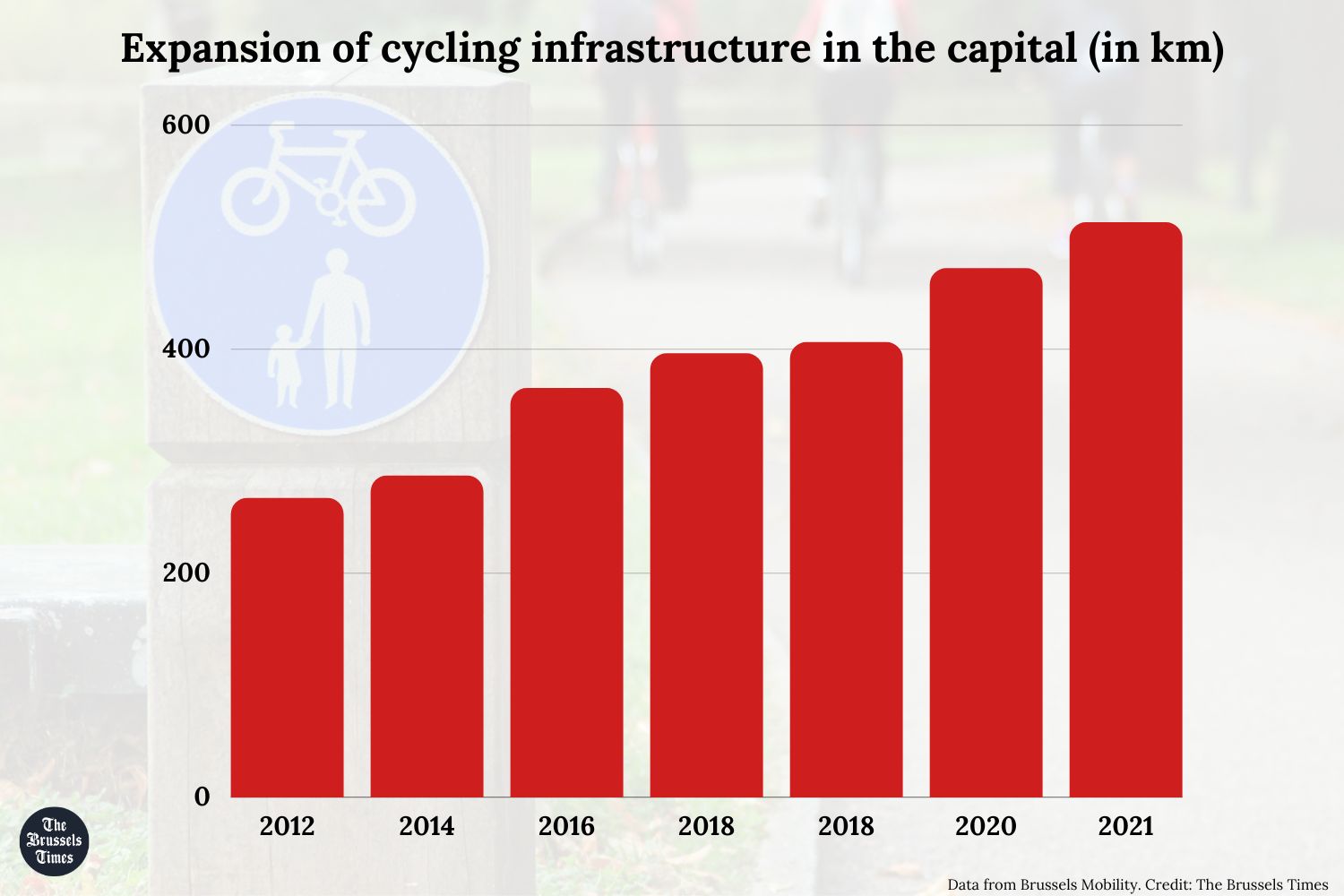Cycling is increasingly becoming an even more popular mode of transport in Brussels, in part as a result of improved infrastructure. Yet, there is still a major need for better coherence across the city's bicycle network.
A recent study by Brussels Mobility found that the proportion of journeys undertaken by bicycle increased from 3% to 9%, with one in five Brussels residents saying they cycle "every day" or "once or several times a week." The agency argued this is, in part, due to the public investment in bicycle lanes and overall infrastructure.
"Year after year, we continue to expand the cycling infrastructure throughout the Region, and the number of cyclists has tripled. What can be done in Amsterdam, Copenhagen, and Paris can be done, can now be done in Brussels," said the Brussels Minister for Mobility, Elke van den Brandt.
In total, 513 km of "cycling infrastructure" is now available in Brussels, including two-way cycle paths, marked cycle paths and shared cycle and footpaths. It has also created more than 40,000 bicycle parking spaces on public roads, and more than 7,000 secure parking spaces in bike boxes and local car parks.
The agency is working to further develop the network. Among the main projects, the completion of the two-way cycle path on the Small Ring (near Botanique and Boulevard Baudouin), a connection with the Flemish cycling network along the E40 (between the Avenue des Communes and the Avenue du Péage) and new cycle paths on Regional Cycle Route in Uccle and Forest.
Safe cycling network still lacking
The marked rise in the number of cyclists in the region, as well as the political will to introduce better bicycle infrastructure over the last decade, has been welcomed by cycling organisations. However, for Thomas Deweer, policy officer at Fietsersbond, argued that the biggest challenge for the region, creating a coherent network, has not yet been tackled.
"A cycling network is more than a few bits and pieces. There are indeed great cycle paths in a number of places, but those bits and pieces do not form a coherent whole," he told The Brussels Times.
Related News
- Belgians mostly get around on foot and by car, bicycle continues to rise
- Belgians travel mostly on foot or by car, but bicycles increasingly popular
Deweer referred to a number of pain points and dangerous intersections in the region which have not yet been improved, most notably the Vlaamse Poort between the Dansaert district and the canal. Despite many children cycling it every day back and forth from school, the junction has not been adapted to ensure better safety.
"We have to keep working on this and improve the current network until everyone can get from home to work and certainly from home to school safely in Brussels," he concluded.


